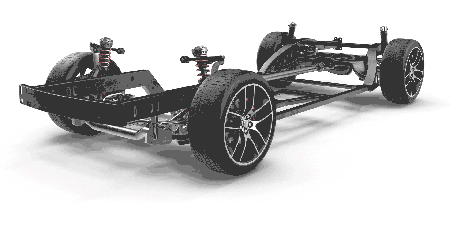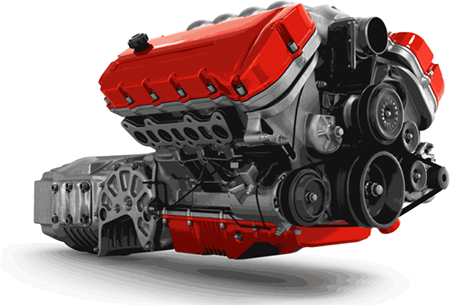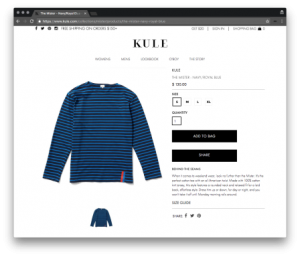In Part 6 of a nine-part series, contributor Peter Ladka takes a look at the “car” of the race team and how its corresponding systems allow your marketing organization to take action with its martech stack.

Welcome to Part 6 of: “A Nine Part Practical Guide to Martech Enablement.” This is a progressive guide, with each part building on the previous sections and focused on outlining a process to build a data-driven, technology-driven marketing organization within your company. Below is a list of the previous articles for your reference:
- Part 1: What is Martech Enablement?
- Part 2: The Race Team Analogy
- Part 3: The Team Members
- Part 4: Building the Team
- Part 5: The Team Strategy
In the previous parts, we looked at how your martech team is a parallel to an automobile race team. So far, we’ve dug into how a race team constructs their team and then builds a strategy for winning their individual races and the overall race series. We’ve compared how these practices are similar to a successful approach to constructing and strategizing for a martech team, identifying this as the “martech enablement” process.
As we continue with this guide in the next two parts, we’ll discuss the “car” of the race team and how this corresponds to your marketing organization’s martech stack.
It would seem silly if I discussed martech stacks and didn’t mention the great work that Scott Brinker has done in helping us all understand the products available in the arena of martech. The “Martech Landscape” he has been producing since 2007 is clearly the de facto work that provides marketing organizations insight into the vast array of tools available to improve their marketing efforts. I can’t wait to see how the martech product landscape evolves. Brinker will surely be right there helping make sense of it all.
If we go all the way back to Part 1 of this guide, we discussed how ultimately martech enablement success boils down to insights and actions. What we understand (insights) about the race track we’re traveling on and how we respond (actions) will determine whether we win the race.
In this part, Part 6, as we discuss the car and technology, we’ll look at the systems of the car and your martech stack that enable you to take action. In Part 7 of this series, we will discuss the systems that support insights like dashboarding, KPI measurement, analytics and collaboration tools. Let’s get started.
Building the car
As this guide has been progressing, I’ve been asked several times about the order of the martech enablement process: “Why does that stack come last?” The answer is simple. As Stephen Covey’s book, “The 7 Habits of Highly Effective People,” says: “Begin with the end in mind.”
To understand the type of car a race team will need, you first must understand the kind of race you’re going to run. This is best determined by the team, which must be in place first. It would be silly to build an Indy car only to realize you’re racing a 100-day, all-terrain rally around the world. People, then strategy, then car and technology.
People -> Strategy -> Technology
This top-down approach (rather than letting the car/technology define the strategy and team) is, in my experience, the best way to approach martech enablement. I do realize that it is rare that marketing organizations are “greenfields” when it comes to martech stacks and products. You likely have many martech products currently in use.
“Getting better value” out of your existing investments might seem a logical goal for your martech enablement initiatives. Resist the urge to start there. This approach often results in misguided efforts that rarely hit the mark because they aren’t driven by your team objectives.
Instead, insist that your team objectives drive the need for modifications to your martech stack. This will ultimately result in getting better value out of your existing and future martech stack. In a later part of this guide, I’ll discuss how to enable your team and strategy to incrementally improve your existing stack to support your team objectives.
Safety first
When it comes to racing, it seems that a primary focus on speed and winning is all that’s needed. I think it’s appropriate to start off with a discussion about safety.
In racing, the well-being of the team is, without question, a paramount consideration. This isn’t just about the driver’s safety, either. It’s the safety of the pit crew and other team members. I don’t have to go into detail about the impact of a serious injury or death of a race team member. It’s severe.
Each racing team has its safety experts. Additionally, overarching race organizations such as Indy, Leman and NASCAR have their own race safety teams. The role of these personnel is to collaborate on safety equipment, technology, procedures and protocols.
So, too, is the case with safety in martech. Start with a mindset of safety first.
A few areas to focus on are:
- internal governance — Systems, policies, procedures and protocols for how martech is managed in your organization.
- regulatory compliance — Many industries have governmental regulation mandates.
- legal compliance — All organizations have varying degrees of legal compliance requirements to follow as a risk mitigation strategy.
- security — Protecting your organization from attacks and breaches.
- disaster recovery — Preparation for unforeseen events that would interrupt business continuity.
A few words about the GDPR
Speaking of safety, there is a major regulatory compliance issue on the horizon. If you haven’t heard of the GDPR (General Data Protection Regulation), you will. This legislation passed in the EU goes into effect on May 25, 2018, with the intention of regulating how companies protect EU citizens’ data.
This will have a large impact on martech for companies that interact with people who reside within EU countries. It’s a serious piece of legislation that you should learn about. There are many good articles on this site that will help you get familiar with GDPR and its impact.
The car
As has been the case across this guide, there are distinct parallels between the parts of a race team and your marketing organization. The car (structure) and technology (systems) that allow you to take action are no different.
When looking at a race car, the core systems can be broken down into three main categories:
- Chassis — The frame, suspension and body
- Powertrain — Engine and transmission
- Control systems — Fuel, steering, braking
The chassis provides the foundation and structure for the car, with the powertrain providing propulsion and power. The control systems allow the driver to take action with the car, making it accelerate, turn/pivot and decelerate. A martech stack has a corresponding chassis, powertrain and control systems as well.
I think it’s important to state that I’m not going to exhaustively explain what each product type is and does. This article would become too long and unreadable. Much has been written about the value proposition of each of these systems.
What I will discuss is the strategy around using these products and how they interplay to create a cohesive and unified martech stack upon which to execute your martech strategy and achieve your team and organizational objectives. Let’s dig in and begin to see how these three systems come together to build a functional and flexible martech stack.
The chassis

As I mentioned, the chassis is the structure upon which the rest of the car is built. In the process of martech enablement, the chassis part of martech stacks is the products that are used to house and manage data. These products are the core of your martech stack and generally serve as the foundation all other martech technology is reliant on.
Below is a list of the types of products that fall into the “chassis” category in your martech stack. Buckle up, you are now entering the wide world of acronyms:
- CRM — Custom Relationship Management
- CDP — Customer Data Platform
- ERP — Enterprise Resource Planning
- DAM — Digital Asset Management
- PIM — Product Information Management
- DMP — Data Management Platform
The first question I expect to get asked is, “Why isn’t MAP (Marketing Automation Platform) or an e-commerce platform on this list?” While I agree that both these platforms house data, I prefer to categorize them in the Powertrain category as their primary roles in your martech stack are as automation and delivery tools. The fact that they store data is an incidental (albeit important) requirement, not their core intended use.
This brings up another topic: data strategy. This is what the chassis is all about.
Data strategy: Customer data nirvana?
Oh, the temptation to believe in a world where all your customer data lives in the same place. It sounds so sweet. It’s rarely completely achieved, and in most instances, complete convergence of data into a single customer view isn’t necessary. But it is a good direction to face and continually move toward.
What’s most important regarding data is understanding what information is important in what scenarios and use cases, which data stores are the “systems of record” in those scenarios and how data flows through those systems. A clear data map, matrix and flow diagram are very (did I say VERY?) important to your winning the race. Maintaining clean data is extremely important as well. A solid data strategy is one of the most important components of martech enablement.
The powertrain

The powertrain is the engine of your martech stack. It is composed of the systems you use to deliver core marketing efforts to the marketplace. They are part of the core functional systems that move your marketing initiatives forward.
These are the products that provide propulsion by harnessing the power generated by the engine, transforming that into the appropriate torque via the transmission and delivering that to wheels through the drive shaft. When is comes to the “actions” part of martech enablement, the powertrain delivers the power!
- WCM — Web Content Management
- Ecom — E-commerce Platform
- MAP — Marketing Automation Platform
Just as the engine must be securely fastened to the chassis, your powertrain systems must be tightly secured to your chassis systems. The effectiveness of your CMS, Ecom and MAP platforms is limited if they’re not integrated with your chassis system. Without this solid connection, your powertrain is like an engine running outside a vehicle. It can run and generate power, but you’re limited in your ability to harness that power for a useful purpose.
The control systems
If the powertrain delivers the forward motion of the “actions” of martech, the control systems provide the steering, acceleration and braking. Think of these tools as products focused on leveraging and controlling the power that’s generated by your powertrain.
The list (more crazy acronyms) in this category is vast. I list some of the more widely identified product types here, but as you expand your martech stack, realize that most of the products that haven’t been identified as chassis or powertrain products will fall into this category.
- MRM — Marketing Resource Management
- ABM — Account-Based Marketing
- Ad & retargeting marketing systems
- Search marketing and systems
- Experience & engagement management
- Personalization
- A/B and multivariate testing systems
- ECM — Email Campaign Manager (if not handled by your MAP)
- Video management platforms
- Social management platforms
- Yada, yada, yada
This list could go on forever, but the above gives you a flavor of the type of tools that are part of the control systems of your martech-enabled stack. It’s favorable — and in some cases, necessary — to have a strategy of assembling these systems on your chassis while connected to your powertrain. Again, evaluating how they work together, leveraging the data in your chassis systems and the power of your powertrain, is an ongoing area for growth and improvement.
Intro to Part 7: Building the supporting tech
This article is hardly exhaustive. It was intended to provide a framework of how to look at and categorize some of the products in your marketing stack.
In Part 7 of this series, we’ll dig into the the remainder of your martech stack. The remainder includes communication and management tools, as well as the broad topic of systems — such as web analytics, marketing performance management, attribution, business intelligence and data visualization — that make up the “dashboards” of your martech stack to provide martech enablement “insights” to the team.
We will also discuss management tools that enable your marketing organization systems to help manage your operations. Additionally, we’ll explore tying these systems together with different types of integration strategies and tools.
I look forward to continuing to share with you about martech enablement in Part 7 of this guide.
Some opinions expressed in this article may be those of a guest author and not necessarily Marketing Land. Staff authors are listed here.
Marketing Land – Internet Marketing News, Strategies & Tips
(92)








